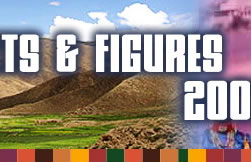|
Before the peaceful liberation in 1951, Tibet was a land-locked
region without any modern industry. The locals lived on livestock
breeding, and also on farming and handicraft business. After 1951,
Tibet received financial and material support from the Central
Government for the construction of key projects. In the 1980s, the
Central Government organized national support for Tibet in terms of
talent, materials, funding and technology. This was coupled with a
special support geared to stimulate the further development of
Tibetan economy and improvement of people's livelihood.
|





